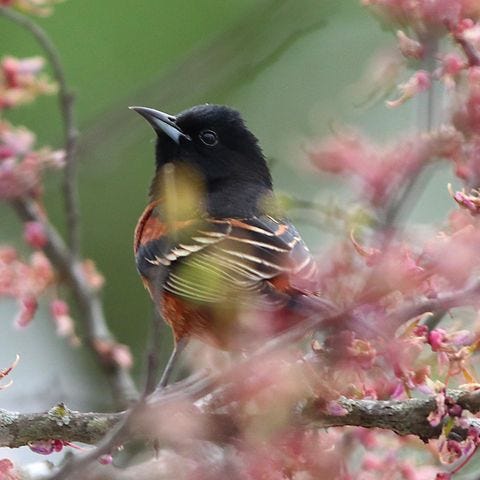Illinois rare bird alert finds home on messaging app
Modern tools make finding unusual species easier than ever.
Who among us doesn’t remember the halcyon days of dialing a telephone to get up-to-date information on the weather, sports scores, or even the time? There was that voice emanating from the receiver and plain-stating, “At the tone, the time will be 6 o’clock.”
It’s hard to believe, but as recently as the 1990s, the same went for rare birds. Just how did someone know a Pacific Loon was seen in the middle of June in Lake County, Illinois, in 1991? They telephoned a rare bird alert via landline to listen to a recorded message. Then they hightailed it as fast as they could to try and see the bird. It might be hours or even days too late, but that was the way birding was when rare sightings were shared by phone.
Technology has transformed birding in the past two decades and made this pursuit much more accessible for folks. First, sightings began to be shared on listservs via Yahoo Groups and Google Groups (Illinois Birders Exchanging Thoughts continues to this day). Then sightings were shared via social media, with Facebook being the primary choice among platforms. Cornell Lab of Ornithology launched eBird in the 2000s, a searchable, realtime database of sightings.
We mostly had the status quo until approximately four years ago when messaging apps appeared on the birding scene. Platforms like GroupMe have quickly proliferated, so much so that many of us are tracking several GroupMe threads at once, from the Illinois Rare Bird Alert to the Cook County and McLean County Rare Bird Alerts. In other states, Discord and Telegram are the platforms of choice.
The funny thing is that accessing these chats is sort of old school—you have to be invited by an existing member, and that’s mostly through word of mouth. Most groups are set to “private” to guard against spam and bots. Any veil of invite-only secrecy is unintended.
The upside to this is connecting with other birders online and in-person. So the next time you’re out in the field, ask to be invited to the local GroupMe chat, and you’re sure to be welcomed with open arms. That way alerts will be in your pocket or in the palm of your hand. And you won’t miss the next Pacific Loon or other rarity that descends into your area.
Blackbirds singing, attacking in broad daylight
With spring’s arrival comes another Chicago bird tradition: the aggressive male Red-winged Blackbirds on the lakefront. Many of us have experienced their fierce defense of nesting territory, getting bonked on the head or decked in the back. Block Club Chicago had an item this week featuring the ornery Icterids and the seeming increase in their numbers.
The early interactions with the red-winged blackbird are likely due to unseasonably warm weather in April, when the city smashed a 138-year record for high temperatures. Douglas Stotz, ornithologist and senior conservation ecologist at the Field Museum, said the bump in interactions coincided with the mid-April warmup.
One thing is certain: Red-winged Blackbirds and people are going to continue to flock to Lake Michigan all summer long. The best thing to do is to remain vigilant when encroaching on blackbird territory—or “wear a hard hat” as one social media poster commented.
Our most threatened natural areas
If you have 3 minutes, please fill out this survey and your views will be factored into a potential project that will raise awareness of prairies. Click the button below to get started. Stay tuned to this space for survey results and more in the near future. Thank you for your time!
TWiB Notes
The annual Spring Bird Count took place on May 6 at dozens of sites all across Illinois. Sheryl DeVore has an account of her experience in Lake County.
As we walked the gravel road bordered with some agricultural land, shrubby areas, oak woodlands and wet areas, we documented five different Brown Thrashers singing. This species is a mimic and repeats various songs and call notes of other bird species, typically once or twice. Listening to its varied tones while I walked by a native prairie crab tree was nirvana.
Illinois recorded 240 species on Saturday as part of World Migratory Bird Day, trailing last year’s total by 10. There were 2,122 checklists submitted across the state.







